Blue-throat Luscinia svecica
Two races. The majority of records are of Red-spotted Bluethroat L.s. svecica, rare migrant, northern Europe. White-spotted Bluethroat L.l. cyanecula, vagrant, south-western Europe.
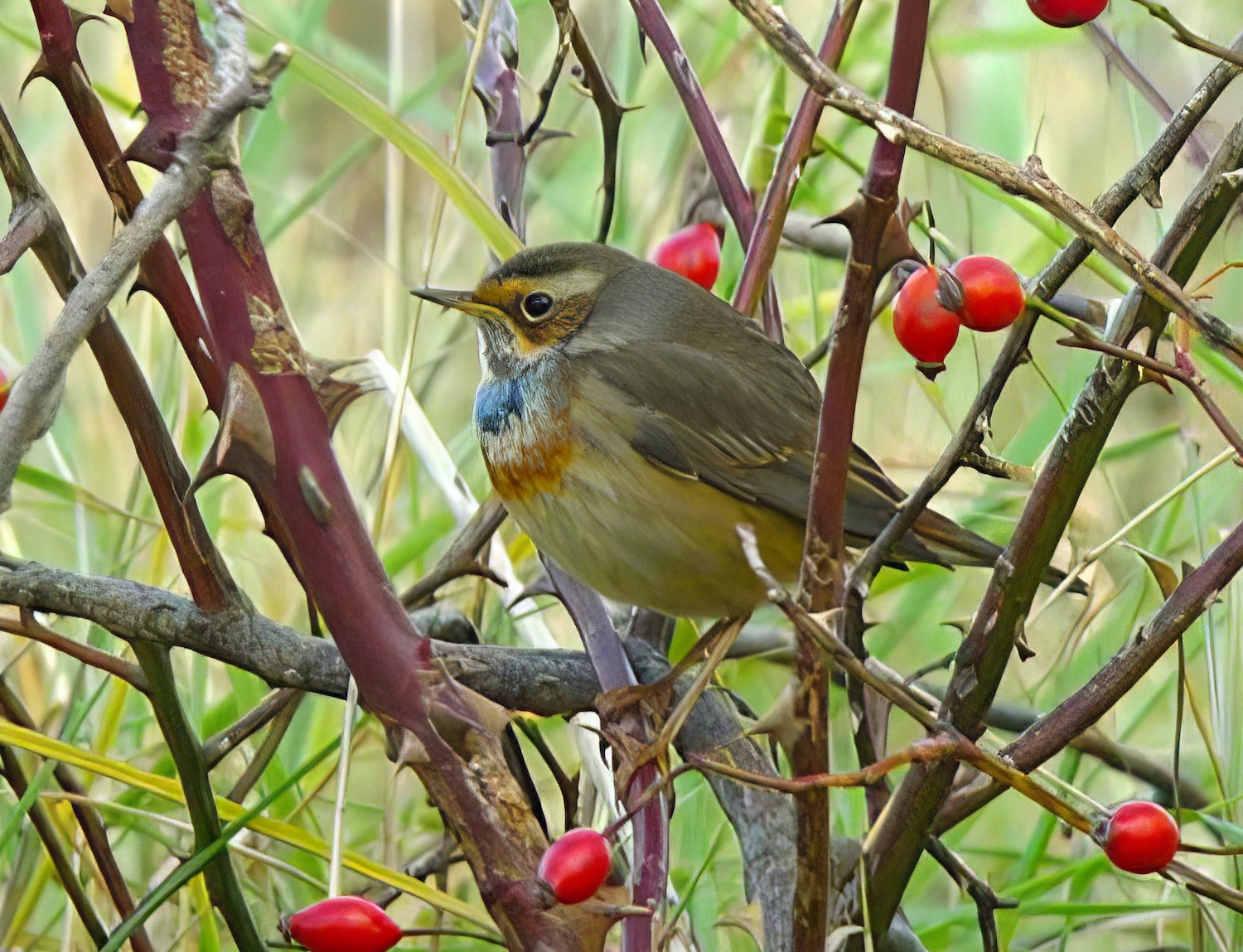
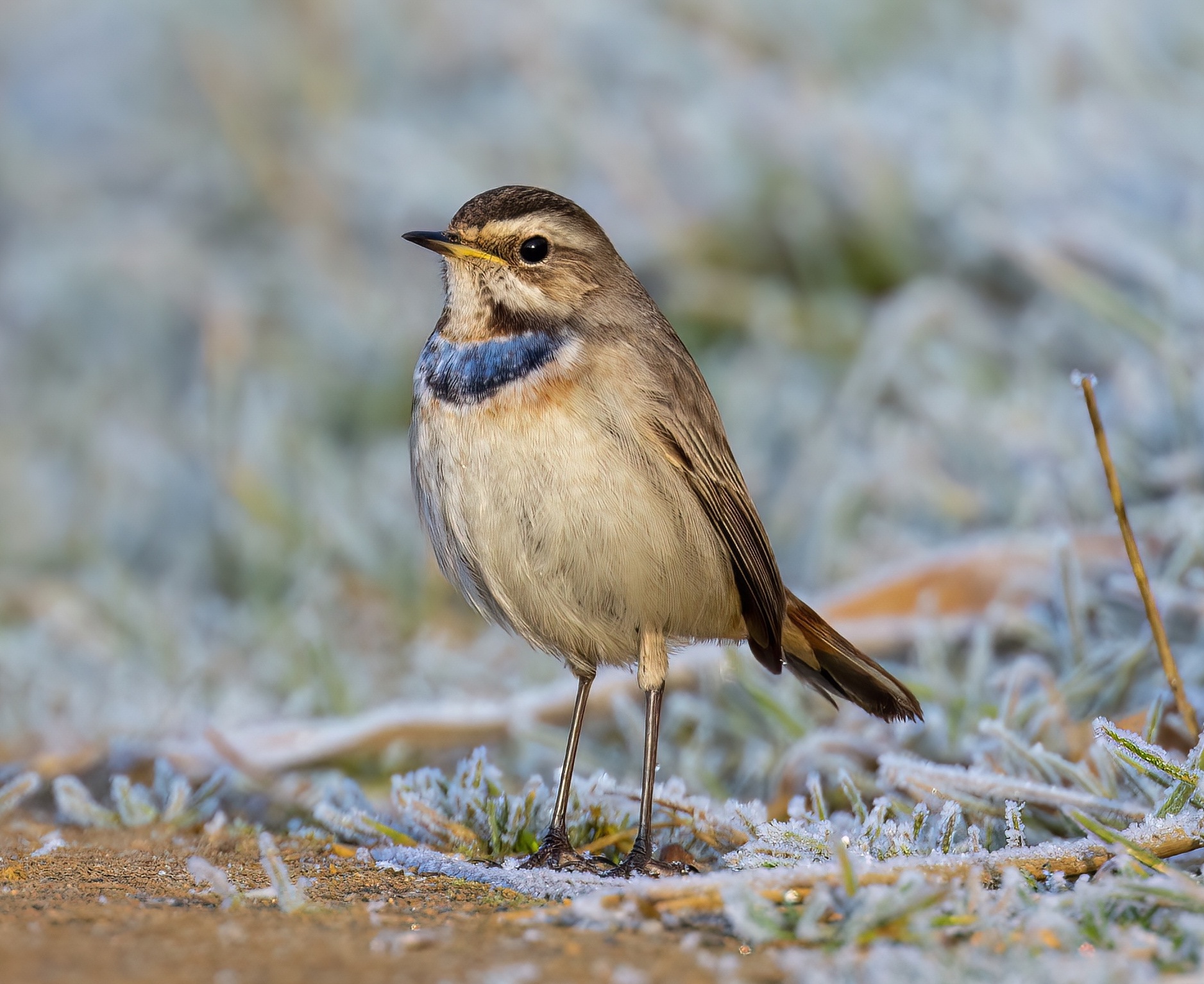
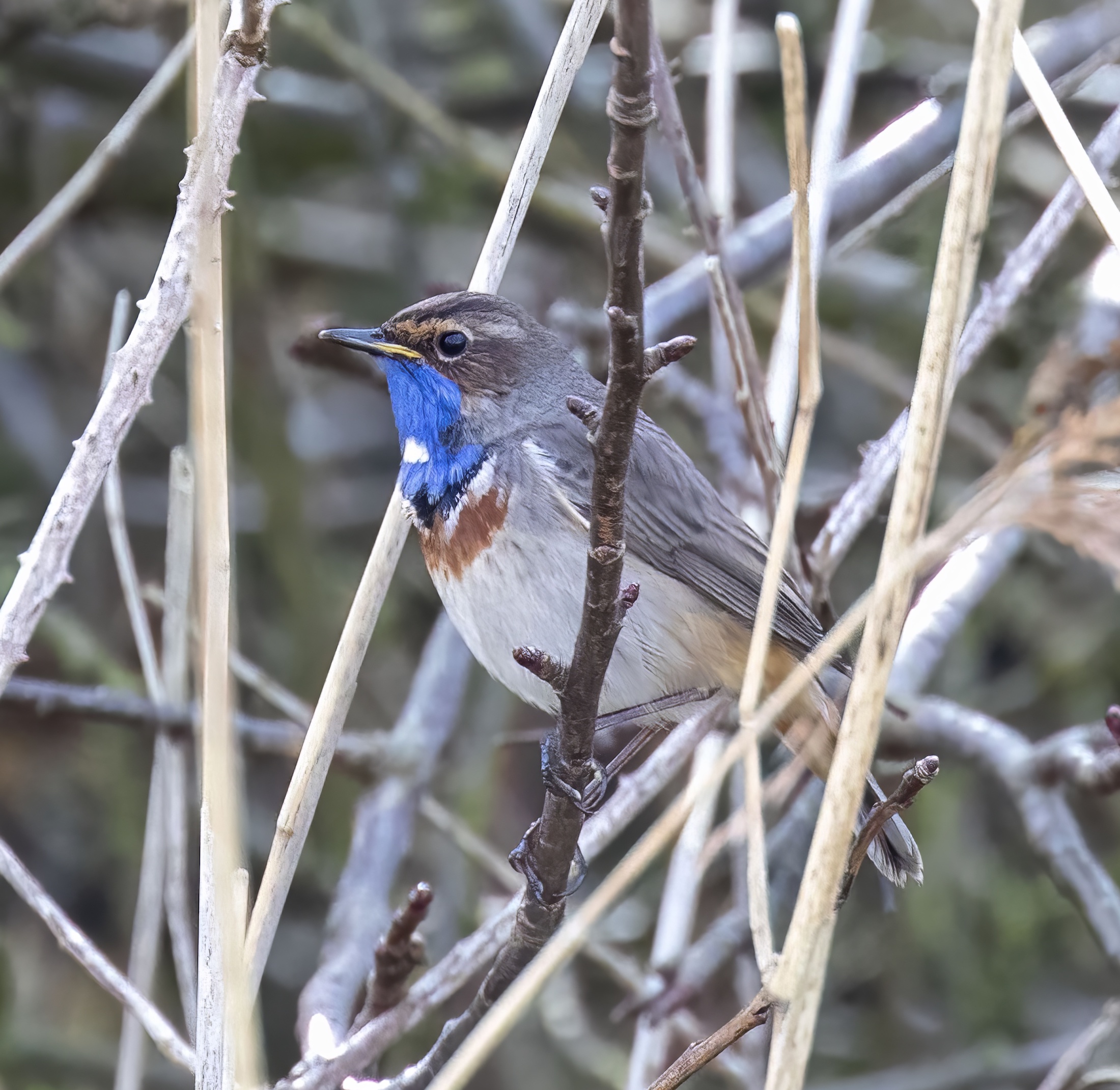
Left, Red-spotted Bluethroat L.s. svecica Gibraltar Point November 3rd 2012 (Paul Neale); centre 2CY Bluethroat (indeterminate race) Willowtree Fen February 2017
and right, White-spotted Bluethroat East Halton pits April 3rd 2018 (both Graham Catley)
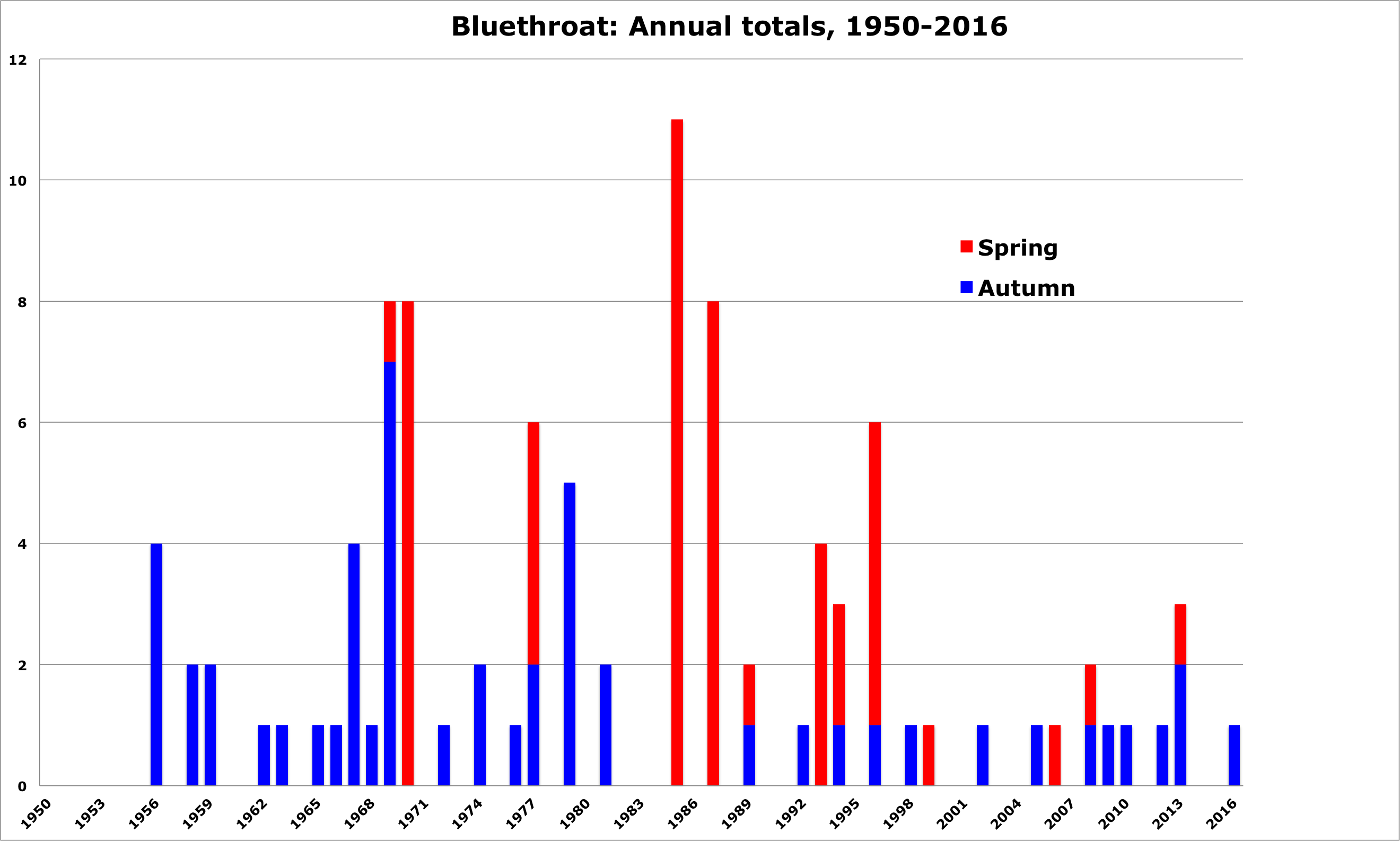
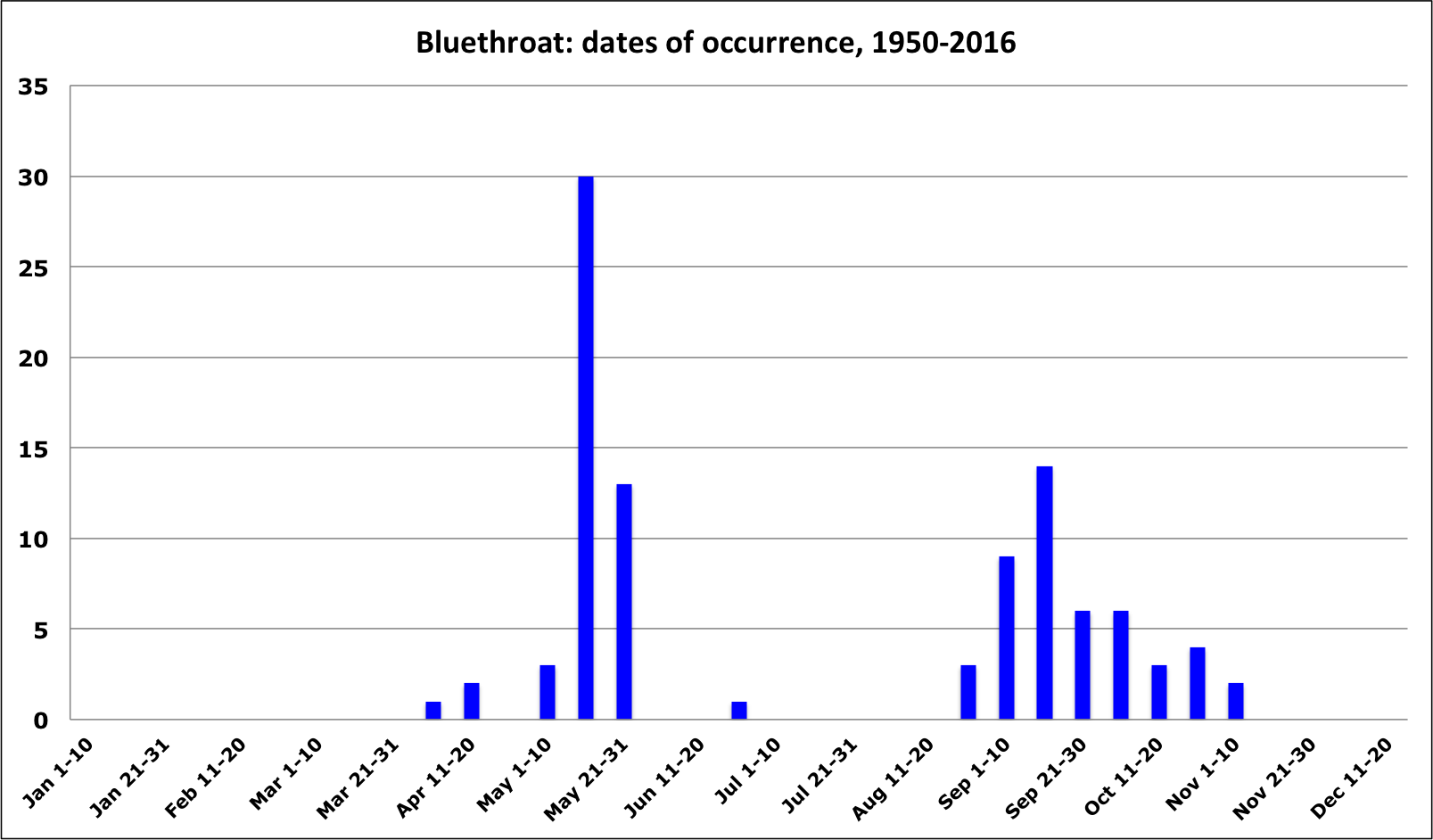
The red-spotted subspecies L.s.svecica has contributed most records (though there are quite a few records for which race is not recorded), but it should be noted that distinguishing the subspecies is not wholly straightforward, as some belonging to the white-spotted race L.s.cyanecula can show orange spots. Currently eleven races are recognised, eight of these attributable to red-spotted forms; one to the white-spotted form; and two, Iberian Bluethroat, L.s. azuricollis and Caucasian Bluethroat, L.s. luristanica, having no coloured spot within the blue throat and breast patch at all (Guzy et al, 2020).
The majority of svecica turn up later in mid-May as befits a northern migrant with most in September in the autumn, with the latest record being of one at Horseshoe Point on November 4th, 2008. Spring records of red-spotted or unattributed birds span May 5th-31st.
By contrast confirmed records of the white-spotted race cyanecula make up only six of the total. The first of these was one said to be showing the right characteristics, seen at Chapel Point on 4th September 1963. Five of the six records were coastal and the other was an exceptional record of a singing male at Whisby NP, Jun 21st-Jul 4th 1987. The white-spotted birds have tended to turn up earlier in the spring and account for all three April records, the earliest on Apr 3rd, 2018.
The earliest birds in autumn, when race can be difficult to assign, were at Saltfleetby on August 21st 1966 and at Gibraltar Point on August 25th-26th 1966, while the latest were at Gibraltar Point on November 3rd 2012 (svecica) and November 4th 2008 (race not assigned), and a 2CY male of indeterminate race over-wintered at Willow Tree Fen LWT reserve February 10th-March 30th 2017.
Reference
Collar, N. (2018). Bluethroat (Cyanecula svecica). In: del Hoyo, J., Elliott, A., Sargatal, J., Christie, D.A. & de Juana, E. (eds.). Handbook of the Birds of the World Alive. Lynx Edicions, Barcelona. (retrieved from https://www.hbw.com/node/58460 on 24 April 2018)
(Account prepared April 2018; updated with reference to the new Birds of Lincolnshire (2021) December 2022)

